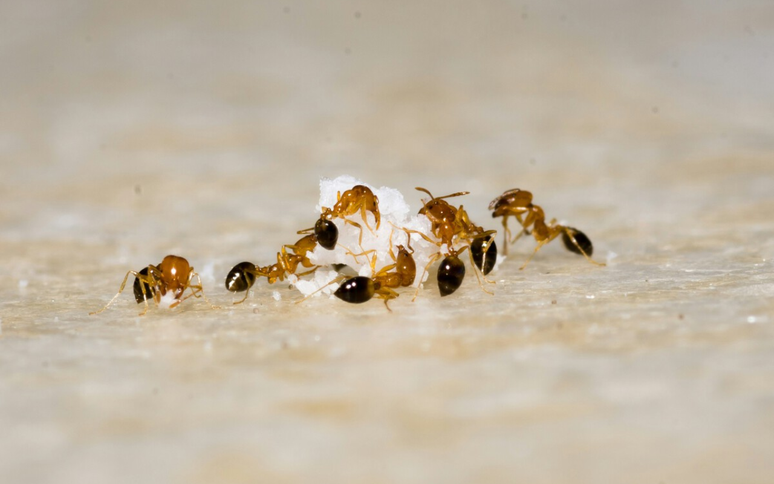In 2022, Brazil recorded 1,933 cases of penile cancer and 459 amputations; According to experts, the disease is affecting more and more young people
html[data-range=”xlarge”] .img-b8f68008bd53bfec9219587257fac37ed5xmddky { width: 774px; height: 435px; }HTML[data-range=”large”] .img-b8f68008bd53bfec9219587257fac37ed5xmddky { width: 548px; height: 308px; }HTML[data-range=”small”] .img-b8f68008bd53bfec9219587257fac37ed5xmddky, html[data-range=”medium”] .img-b8f68008bd53bfec9219587257fac37ed5xmddky { width: 564px; height: 317px; }
In 2022, Brazil recorded 1,933 cases of penile cancer and 459 amputations. These alarming numbers were released in early February by the Brazilian Society of Urology and the Ministry of Health and call attention to the often overlooked health of men.
“It is one of the few cancers that can be prevented. Men should clean the glans twice a day with soap and water and use condoms,” says José de Ribamar Rodrigues Calixto, penile cancer discipline supervisor at the Uro Department. -oncology of the Brazilian Society of Urology.
Considered a rare tumour, this type of cancer could be easily combated with effective sanitation and efficient public policies. According to specialists interviewed by the BBC News Brasil service, what attracts the most attention is that the disease is affecting more and more young men.
“The age at which these lesions appear in our country are in young men, aged 28 to 35, mainly in the North and Northeast. In the 1980s, they were men aged 60 and over,” warns the SBU practitioner .
And it’s not just cancer. Other inflammatory and infectious diseases can reach the penis and deserve attention. Many of them can be avoided with frequent use of condoms, as well as routine visits and examinations with a specialist doctor. We explain each of them below.
penile cancer
The disease mainly occurs due to lack of hygiene and contamination by the HPV virus. According to data from the Ministry of Health, penile cancer is most common in the North and Northeast regions of the country, which account for 2% of all types of cancer affecting men.
Men who have not had circumcision, surgery to remove the foreskin covering the glans penis, are more likely to develop the problem, as the secretion called smegma, similar to white wax, is not removed properly, increasing the risk of contamination. .
The tumor may appear through wounds or nodules and is accompanied by persistent inflammation, which may or may not manifest as tissue necrosis, with pus, bleeding, and a fetid odor. It starts with a simple redness or a small sore, resembling a pinhead.
Early diagnosis helps fight the disease and offers a better chance of a cure. Furthermore, avoid partial and total amputations of the genital organ, since in an advanced stage the disease affects the entire penis and can even progress to metastasis.
At the beginning of the disease, where small lesions are present, they can be removed by cauterization, lasers and creams without compromising the limb. This type of cancer can also generate lymph nodes and give rise to ganglia in the groin, which are similar to nodules. In that case, a third or all of the penis must be removed.
When the condition becomes more serious and the genital organ is already completely contaminated, the specialists opt for the total amputation of the member. After the procedure, the patient will not have a normal sex and urinary life. To pee, doctors create an opening of the urethra in the perineum and the man begins to urinate sitting up.
According to Calixto, the big problem preventing the prevention of this disease is the lack of access to education. “Public health is insufficient. You can only have a consultation in a year and the government encourages very little HPV vaccination. In addition, the reference centers for STIs (sexually transmitted infections) can be counted on the tip of a finger. The state must take over. These are shortcomings of public policies,” Calixto warns.
To prevent the disease, the patient should ideally have his phimosis removed, perform good penile hygiene and, as a child, be vaccinated against HPV.
balanoposthitis
Balanoposthitis is an inflammation of the skin of the foreskin. It is usually caused by the fungus candida albicanswhich is the same responsible for candidiasis in women.
Men who have not had surgery to remove phimosis may suffer more from the problem, as this part of the penis ends up getting wetter and warmer, favoring the appearance of fungus.
To avoid the disease, the ideal is that the intimate region is very dry and always fresh. “We even recommend using a hair dryer. Remove the excess with a bath towel and use cold air,” says Fernando Meyer, a urologist and professor in the Faculty of Medicine and Life Sciences at the Pontifical Catholic University of Paraná (PUCPR) .
It can also be caused by an irritating process in the region through the condom’s latex or other components. It is recommended that men use hypoallergenic condoms.
Treatment involves using ointments, antifungal creams, leaving the area clean and dry. It is also recommended to avoid tight clothes and excessive consumption of sweets, as sugar can be eliminated in the urine, further facilitating the appearance of fungi.
Peyronie’s disease
Peyronie’s disease, which can manifest itself from the age of 50, presents itself as a calcification of the penis, which causes a curvature of the penis during an erection.
“It is a fibrous plaque that occurs in the corpora cavernosa (internal spongy tissue) of the penis responsible for erection, which can cause pain and make penetration difficult,” explains Meyer, who is also a member of the American Association of Urology (AUA),
Peyronie’s disease, also known as penile curvature, has no apparent cause and can leave the penis with microtrauma. In some cases, the organ can even bend up to 90 degrees.
Generally doctors wait 12 to 18 months for the curve to disappear on its own and, when it doesn’t, they opt for surgery and even penile prosthesis.
Phimosis
It is characterized by excess skin covering the penis so that the head, also known as the glans, is not exposed.
When it appears in childhood, the pediatrician begins to observe the condition and suggests treatments such as corticoid-based ointments, facilitating the sliding of the skin over the glans. Retraction exercises may also be indicated for children over the age of five.
When these measures don’t work, specialists may recommend postectomy, which is surgery to remove the foreskin.
While it’s common when you’re a child, the condition can also develop in adulthood, caused by an infection or trauma to the site.
paraphimosis
It is an inflammatory disease and occurs when the man sags the skin on the penis and can’t snap back into place. When this happens, the region tends to swell excessively, generating the risk of necrosis.
It is a painful situation and, in some cases, it is possible to use manual movements to push the skin back into place. “You have to use a little force and maneuver to put it back in place with the thumb pushing outwards,” says Mark Neumaier, urologist at Marcelino Champagnat Hospital, in Curitiba (PR).
However, when reversal is not possible by hand, emergency surgery is required.
priapism
It’s a sustained erection, which can last more than four hours. In extreme cases, it can reach 36 hours. The problem generates pain, discomfort and is involuntary.
The cause can be multifactorial. Priapism can occur with the use of certain medications such as antidepressants and sexual stimulants such as Viagra. Other causes are trauma to the pelvic region, some types of cancer, such as leukemia, and blood disorders, such as that caused by sickle cell anemia.
Sickle cell anemia is a genetic mutation that leads to the alteration of red blood cells which, instead of being in the normal format, have the shape of a sickle (hence the name “sickle cell”). This increases blood clotting, causing thromboembolic events and priapism.
Patients who have erectile dysfunction and don’t respond well to oral medications such as Viagra and others often need to be treated with injections into the penis (called intracavernous) of vasodilator drugs. They serve to dilate the cavernous bodies, facilitating the entry of blood and, subsequently, the erection.
Errors in dosage or administration can cause priapism to the point where the penis must be surgically drained. The surgery is performed through a “connection” between the corpora cavernosa of the penis and the corpus spongiosum to drain this blood.
“These incorrect injections and doses can cause trauma,” emphasizes the PUCPR urologist.
In less severe cases, the treatment of priapism is to inject substances such as adrenaline into the penis and place ice on the site.
HPV
This STI occurs through the human papilloma virus. HPV causes warts in the genital, oral and anal region. The main route of infection is through sex, which can be oral-genital, genital-genital or even manual-genital contact.
To avoid contamination, you should use condoms and also the HPV vaccination, available in the Unified Health System (SUS) for girls and boys up to 14 years of age.
Herpes
It is a sexually transmitted infection caused by a virus that exists in types 1 and 2.
In the first case, the appearance of “bubbles” is more common in the oral region. Already in type 2, symptoms can appear in the genital region.
Treatment involves using ointments, pills, and not sharing items
Syphilis
The infection is caused by bacteria Pale treponema, which can affect the genitals, throat and mouth. It can be transmitted in both oral sex and penetration. It is not exclusive to the penis, but can occur in the genitals and appear in the mouth. This IST has its main presentations in primary, secondary and tertiary form.
By sexual contact it is possible to cause injury to the penis, which is called “hard chancre”. Because it is painless, the patient may not treat it, leaving the bacterial agent incubating, and the disease may progress to a more severe form, which is secondary syphilis. This is characterized by more systemic symptoms and occurs a few weeks after contamination of the first type. The individual may have patches on the skin and prostrations.
After a few years it can still evolve into the tertiary format, which causes neurological and cardiac alterations.
Treatment is with antibiotics and condoms must be used to avoid contamination.
Source: Terra
Ben Stock is a lifestyle journalist and author at Gossipify. He writes about topics such as health, wellness, travel, food and home decor. He provides practical advice and inspiration to improve well-being, keeps readers up to date with latest lifestyle news and trends, known for his engaging writing style, in-depth analysis and unique perspectives.








